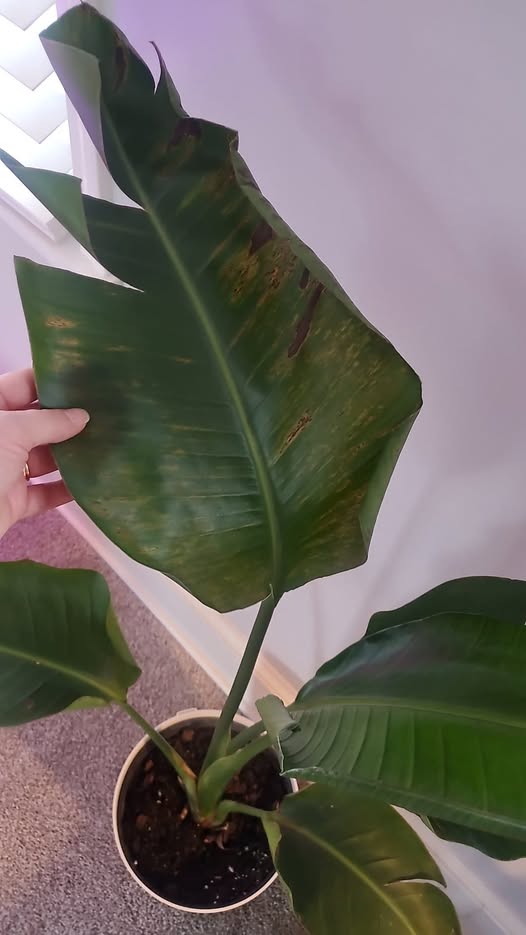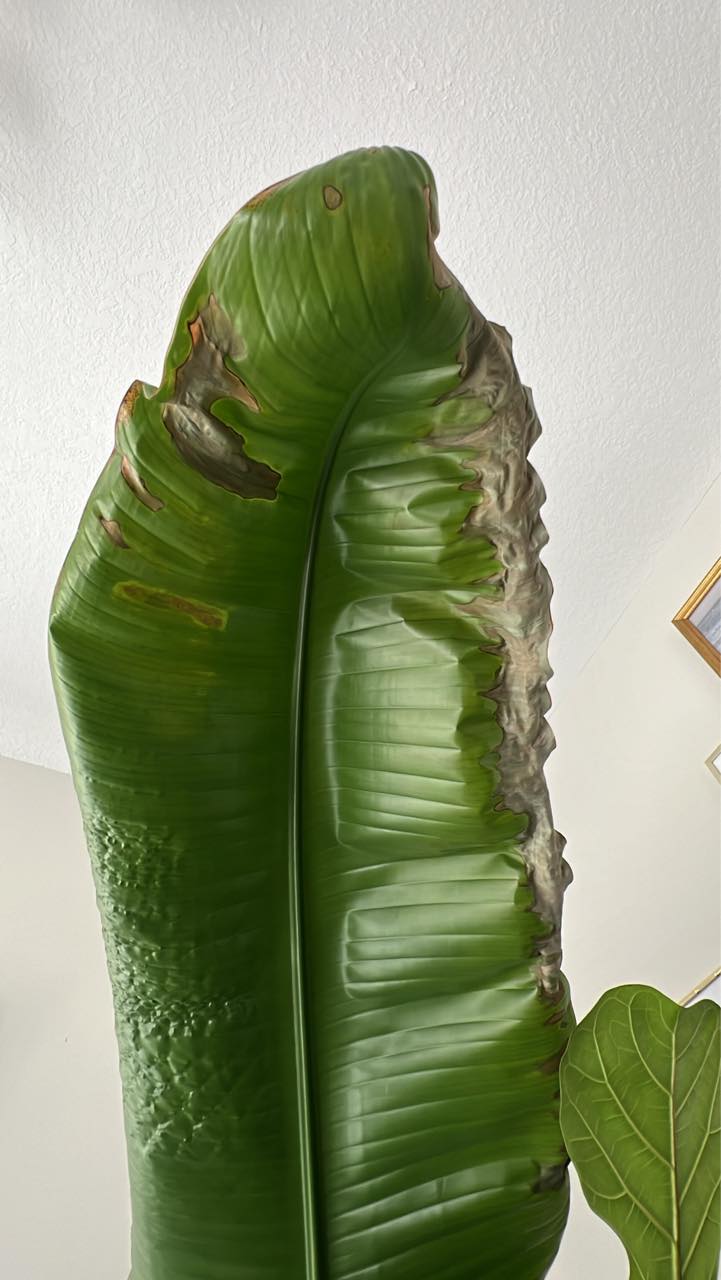
The Bird of Paradise (Strelitzia) is a stunning tropical plant known for its exotic flowers and lush foliage. However, if not properly cared for, it can quickly show signs of distress, from yellowing leaves to stunted growth. Whether your plant is wilting, turning brown, or refusing to bloom, you need to act fast.
A struggling Bird of Paradise doesn’t mean it’s beyond saving. With proper diagnosis and corrective actions, you can revive your plant and enjoy its beauty for years to come. This guide will help you identify problems, implement solutions, and establish the right care routine to ensure your Bird of Paradise thrives.
I’ve provided detailed information in the article below to help with your concerns, However, if you still have questions or need more help, feel free to share photos of your plants or describe your issue on our Facebook Group. Just join the group and leave a comment on the most recent post — either I or someone from the community will respond as soon as possible. We also share helpful and unique plant care tips daily, so consider joining the group to stay updated!
Common Signs Your Bird of Paradise is in Trouble
1. Yellowing or Browning Leaves

If your Bird of Paradise leaves are turning yellow or brown, it could be due to several factors:
- Overwatering or underwatering: Both extremes can stress the plant. Overwatering can cause root rot, while underwatering can dry out the foliage.
- Low humidity: Bird of Paradise thrives in humid conditions, and dry air can cause leaf browning.
- Poor drainage: If the soil doesn’t drain well, excess water can accumulate and suffocate the roots.
2. Drooping or Wilting Leaves

A healthy Bird of Paradise has upright, sturdy leaves. If you notice drooping or wilting, consider these causes:
- Root rot from excess moisture: If the roots are too wet for too long, they may decay, affecting the plant’s ability to absorb water and nutrients.
- Lack of nutrients: Without proper feeding, the plant may weaken and struggle to maintain firm leaves.
- Insufficient sunlight: Not enough light can weaken the plant’s structure, causing drooping leaves.
3. Stunted Growth or No New Leaves
A thriving Bird of Paradise should regularly produce new leaves. If yours isn’t growing, check for:
- Lack of fertilizer: Nutrients like nitrogen and phosphorus are essential for growth.
- Pot-bound roots: If roots are tightly packed in the pot, they may struggle to absorb water and nutrients.
- Inadequate light: Growth slows down in low-light conditions.
4. No Blooms
Bird of Paradise is known for its spectacular flowers, but some plants fail to bloom. Common reasons include:
- Young plant: It takes at least 3-5 years for a Bird of Paradise to mature and start flowering.
- Insufficient sunlight: This plant requires plenty of bright, indirect light to bloom.
- Poor soil conditions: Nutrient-deficient soil can prevent flower production.
How to Save Your Bird of Paradise
1. Fixing Watering Issues
Watering mistakes are a major cause of plant distress. Here’s how to strike the right balance:
Is Your Plant Overwatered?
- Check the soil moisture by sticking your finger 1-2 inches deep. If it feels soggy, it’s overwatered.
- Look for black, mushy roots, which indicate root rot.
- Stop watering immediately and allow the soil to dry.
- If root rot is severe, trim the affected roots and repot the plant in fresh, well-draining soil.
- Always use a pot with drainage holes to prevent water buildup.
Is Your Plant Underwatered?
- Dry, crispy leaves indicate dehydration.
- Water the plant thoroughly until water drains from the bottom of the pot.
- Stick to a regular watering schedule—about once a week, adjusting for season and humidity levels.
2. Providing the Right Amount of Light
Birds of Paradise require a lot of light to stay healthy.
- Place your plant near a bright window where it gets indirect sunlight.
- Avoid placing it in direct, intense sunlight for long hours, as this can scorch the leaves.
- If your home lacks natural light, consider using a grow light to supplement.
- Rotate the plant occasionally to ensure all sides get adequate light exposure.
3. Adjusting Humidity Levels
These tropical plants thrive in humid environments. If your home is too dry, consider the following solutions:
- Mist the leaves with water daily to increase humidity.
- Place the plant near a humidifier, especially during winter when indoor heating dries the air.
- Use a humidity tray: Fill a shallow tray with pebbles and water, placing the pot on top. As the water evaporates, it raises humidity around the plant.
- Group plants together to create a naturally humid microenvironment.
4. Ensuring Proper Nutrition
Lack of nutrients can lead to weak growth and poor leaf quality. Follow these feeding tips:
- Use a balanced liquid fertilizer (10-10-10 or 20-20-20) every two weeks during spring and summer.
- Reduce feeding in fall and winter, when growth slows.
- Avoid over-fertilization, as excess salts can build up and harm the roots.
- Use organic compost or worm castings to naturally enrich the soil.
5. Repotting and Root Care
If your Bird of Paradise has outgrown its pot or shows signs of distress, repotting may be necessary:
- Choose a new pot that is 2 inches larger in diameter than the current one.
- Use a well-draining soil mix containing peat, perlite, and sand.
- Remove the plant carefully, trimming any rotten or tangled roots.
- Repot, firming the soil gently around the roots and watering lightly.
6. Pest Control
Pests can sap the health of your plant. Here’s how to manage them:
- Inspect leaves regularly for tiny bugs or webbing.
- Wipe leaves with a damp cloth to remove dust and pests.
- Spray neem oil or insecticidal soap on affected areas to eliminate pests like spider mites, mealybugs, and aphids.
- If infestation is severe, isolate the plant to prevent spreading.
7. Encouraging Blooms
Getting a Bird of Paradise to flower requires patience and the right conditions:
- Ensure it gets at least 6 hours of bright, indirect light daily.
- Fertilize with a phosphorus-rich formula to boost flowering.
- Keep the plant slightly root-bound, as this can stimulate blooms.
- Avoid frequent repotting, as it can delay flowering.
- Be patient—mature plants bloom more reliably!
Preventative Care: Keep Your Plant Thriving
To maintain a healthy Bird of Paradise:
- Water wisely: Keep the soil moist but not soggy.
- Provide the right light: At least 6 hours of bright, indirect sunlight.
- Keep humidity high: Use misting, humidifiers, or humidity trays.
- Feed regularly: Fertilize during the growing season.
- Check for pests: Inspect leaves and stems for unwanted insects.
- Repot when needed: Ensure roots have space to grow.
